Can openers come in various shapes and sizes. They've evolved throughout the years to become more efficient and safer to use. In this article, we cover the origin and use of various types of can openers.
Video showing the different types of can openers
The Bunker can opener was invented by Charles Arthur Bunker who patented his design back in 1931. The nice thing about this innovation is that it doesn't require the user to grip the can at all - the can opener does all the work.
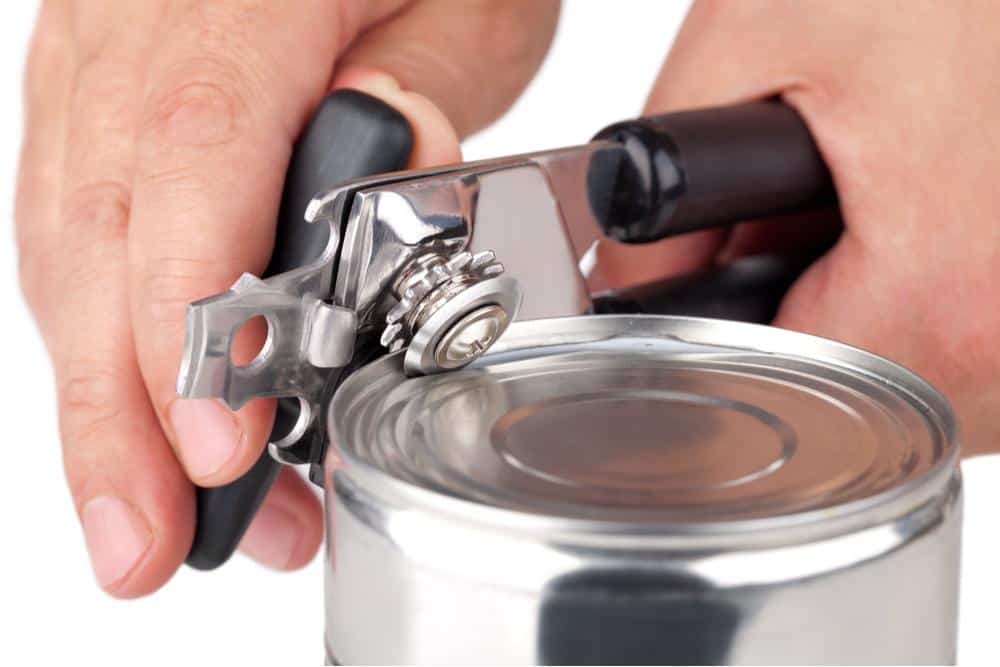
Bunker Can Opener Type
The user will grip down on both of the handles of a bunker opener to get a tight grip on the can. From there, to open the can, you'll turn the knob (or key) along the rim of the can. The cutting wheel cuts along the diameter of the can until the lid is cut free and can be manually removed.
The downside of this type of can opener is that the rim of the can is still intact. This rim (as well as the removed lid) may be sharp to the touch.
The butterfly can opener is a manual can opener that is common in many households. It provides a significantly safer user experience than using an older, lever-type can opener.
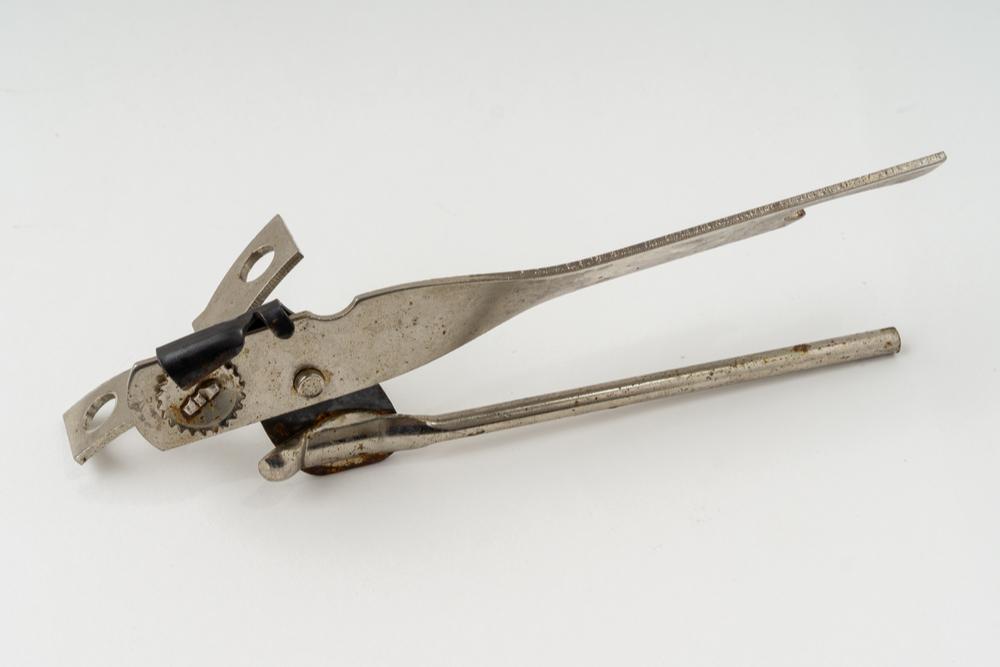
Butterfly can opener
To use a butterfly can opener, you'll first puncture the lid with the device. Next, secure the lid with the tongs. Finally, use the handle (also known as a crank or a knob) to enable the sharp cutting disc (or cutting wheel) to open the can. This type of opener is convenient because it does not require electricity. Additionally, it is easy to use and clean.
The church key can opener is a one-piece manual can opener that is simple to use. It has a sharp pointed end and a rounded, smooth edge on the opposite side. Both sides of the church key can be used as a bottle opener, with the sharp side also having the capability to be used as a can opener.
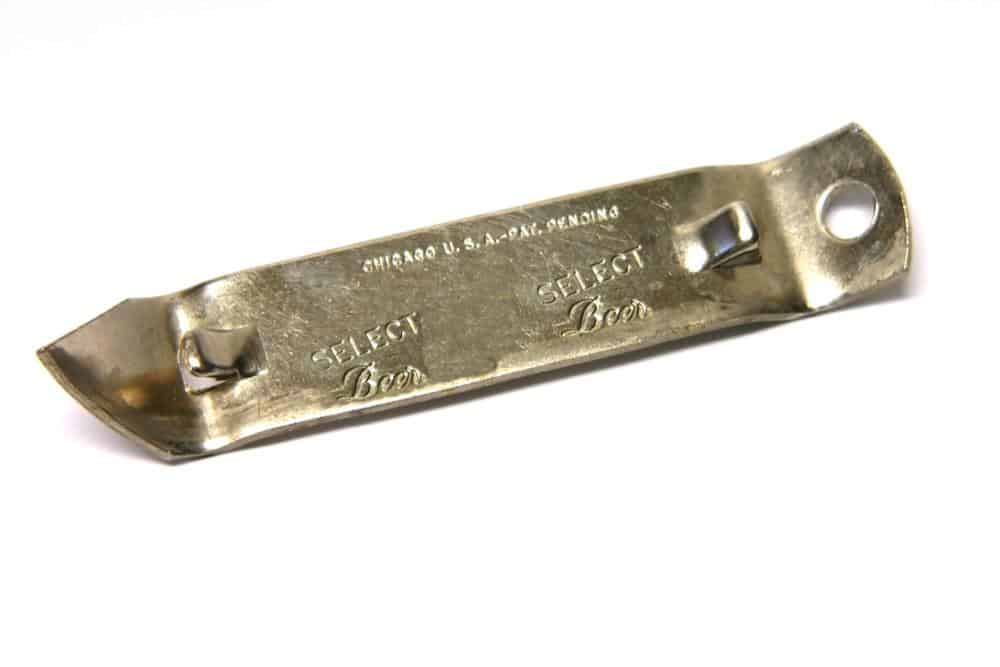
Church Key Can Opener
You can't technically "open" a can with a church-key, but you can easily get the liquid from inside the can. First, puncture one side of the can with the sharp, pointed end of the church key and lift up. You'll notice that this creates a triangular-shaped opening at the top of the can. Next, do the same thing on the opposite side of the can. This second hole will give you a smoother, more even pour from the can as air needs to get into the can to replace the liquid that is being poured out. This second hole makes it easy for air to get back into the can.
The church key is a staple on camping trips because of its ability to open both cans and bottles. You can easily pack it in your backpack or purse and have it ready whenever you need it.
The lever-type can opener, also known as a claw can opener, is a simple device that has been around since the 1850s. It consists of a sharp sickle-shaped blade that is used to puncture the top of a can. The blade is then used to saw along the edges of the can, opening it up. While you can access the contents of the can, you're left with a jagged edge.
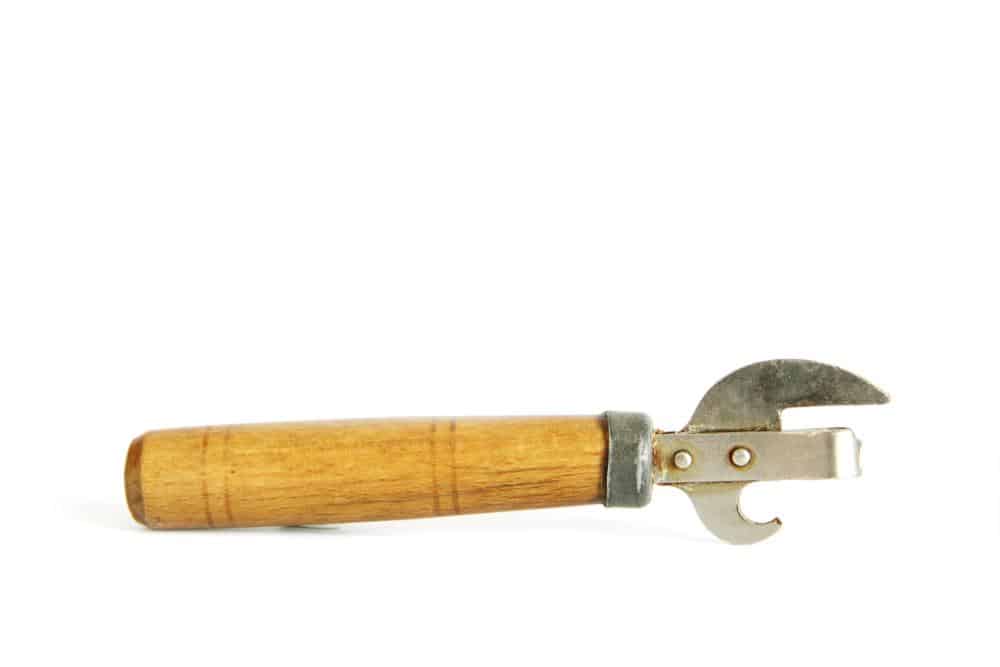
Lever-Type Can Opener
This is a 100% manual can opener that relies on the user's skill (and caution) to effectively open the can. While this type of can opener is very simple and somewhat easy to use, it can also be quite dangerous if you're not careful. The blade is very sharp and can easily cut your finger if you're not paying close attention. After using this type of manual opener, you're left with a sharp edge on both the lid and your can.
A single-wheel can opener is a type of can opener that uses a wheel, crank, and grate to slice off the top of the can. The magnet hangs onto the lid, as the wheel cuts through the top of the can.
The crank is turned to turn the wheel, and the grate slides along the top of the can, cutting through the lid. The magnet is used to hold on to the lid so that it does not fly off when the can is opened.
The smooth edge can opener by OXO removes the entire lid of a can without any sharp edges
The Twist Key can opener was commonly used in the 19th century when you needed to open a tin can. Each can came with a twist key can opener attached directly to the can. These were specifically designed as more of a tin opener than a can opener as they were used to open thin tin receptacles.
To use, the user would work the key back and forth on the outside of the can until the metal fatigued and they were able to peel back a metal strip on the can. The opening was large enough for the user to be able to access the contents of the can.
An electric can opener is a device that is used for opening cans. An electric opener is easy to use and many can be operated with one just hand. Electric can openers can get their power in one of two ways: corded and cordless. Corded electric can openers need to be plugged into an outlet, while cordless electric can openers run on rechargeable batteries.
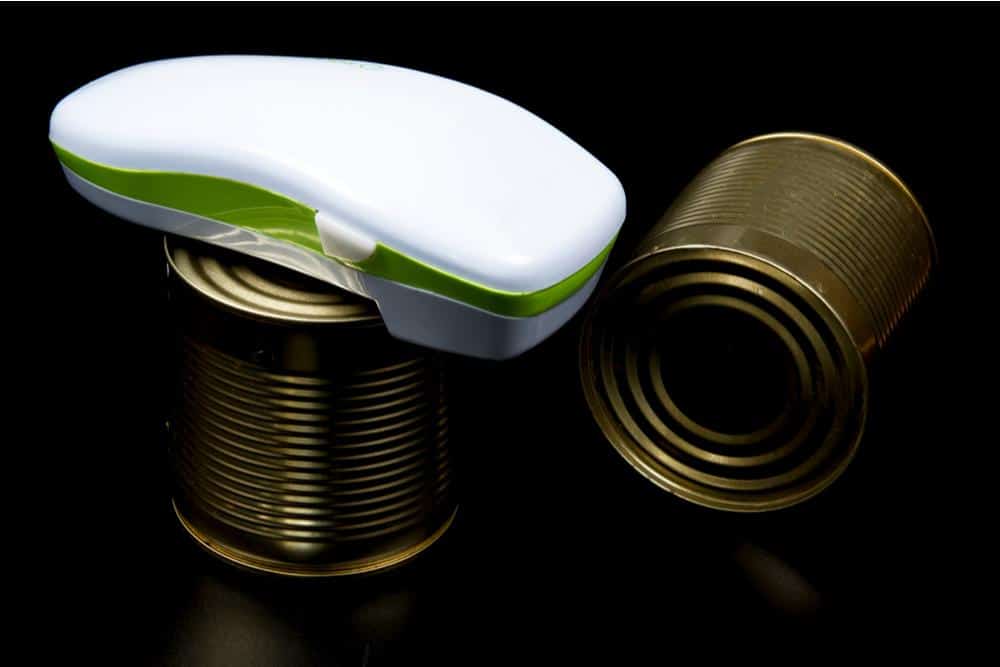
Handheld Electric Can Opener
Electric can openers also can be handheld or countertop openers. Obviously a countertop can opener will take up quite a bit of counter space (or storage space). Handheld electric openers can be quite easy to use - as is the case with the Kitchen Mama can opener as shown below. Not to mention that it is a bit easier to find space in a kitchen drawer for a handheld can opener as opposed to a countertop device.
The Kitchen Mama can opener
Both types of electric can openers have a magnet that holds the can in place while the blade cuts around the lid in mere seconds.
Electric can openers are a bit more expensive than manual can openers - plan on spending anywhere from around $25-$50. Their speed, safety, and ease of use makes them a smart choice for many kitchens.
The side-cutting can opener first made an appearance back in the 1980s, with patents appearing as late as 1997. The side cutting can opener takes a different approach to open cans than traditional can openers.
Traditional bunker and butterfly can openers cut along the inside of the rim to remove the lid. Once the cutting process is complete, you're left with a can and a lid that can have jagged, sharp edges which can cause deep cuts if you're not careful.
The side cutting can opener takes a much different approach. The cutting wheen on the side cutting can cuts along the outside of the can. The end result is that the extreme top of the can - including the rim and the lid are removed.
Most side cutting can openers leave a very fine cut that is smooth to the touch. This means the operator is at much less risk of slicing their fingers when using a side cutting can opener.
Can openers have a variety of features to make their use and maintenance easier. Some of these features are covered below.
Many manual can openers come with a soft, comfortable grip. This can put less strain on your hands - especially if you open a lot of cans over the course of a meal preparation session.
Many electric and manual can openers are made of mostly stainless steel. You can also get can openers in a variety of colors like black, silver, white and red.
Can openers are constructed from a variety of materials. Stainless steel is the most common material, but you'll also see can openers containing other metals like aluminum. Silicone is oftentimes used to create comfortable grips for can openers. Some can openers - usually, lever-type or church key can openers - may even have wood handles.
Many manual can openers are dishwasher safe - some are dishwasher safe but for the top rack of your dishwasher only. Food and particles can in some cases make their way into the gear wheels of can openers, dry, and become a bit of a challenge to clean. Being able to use the dishwasher saves the time and hassle so you don't have to manually clean those hard to reach places on the can opener.
